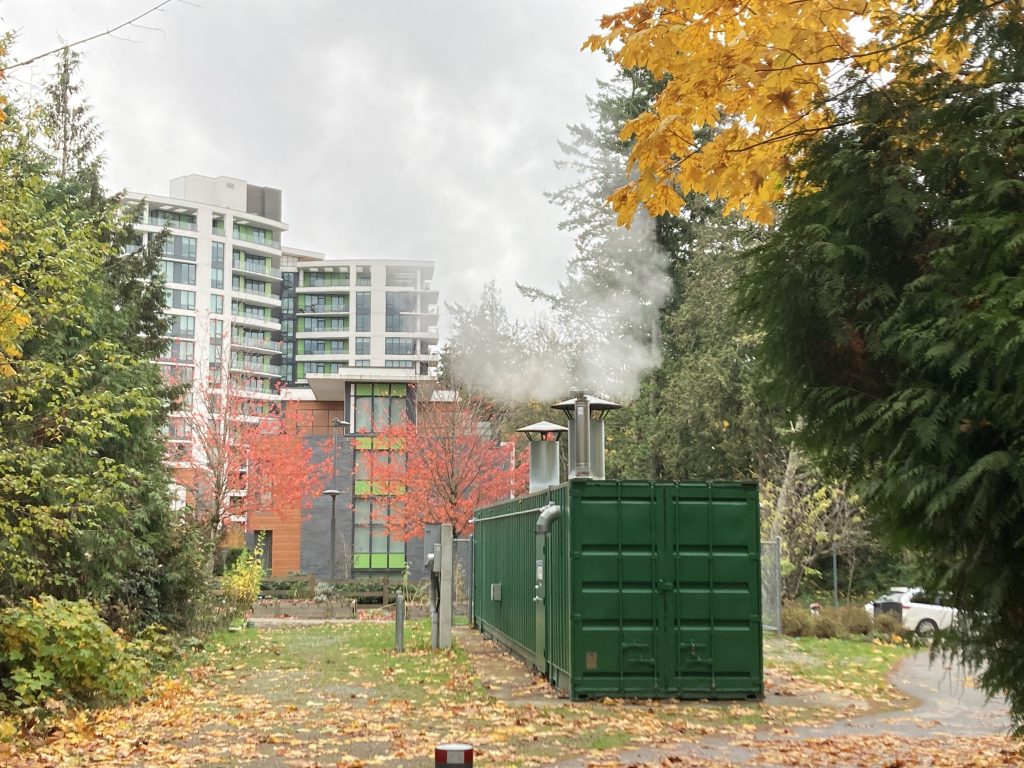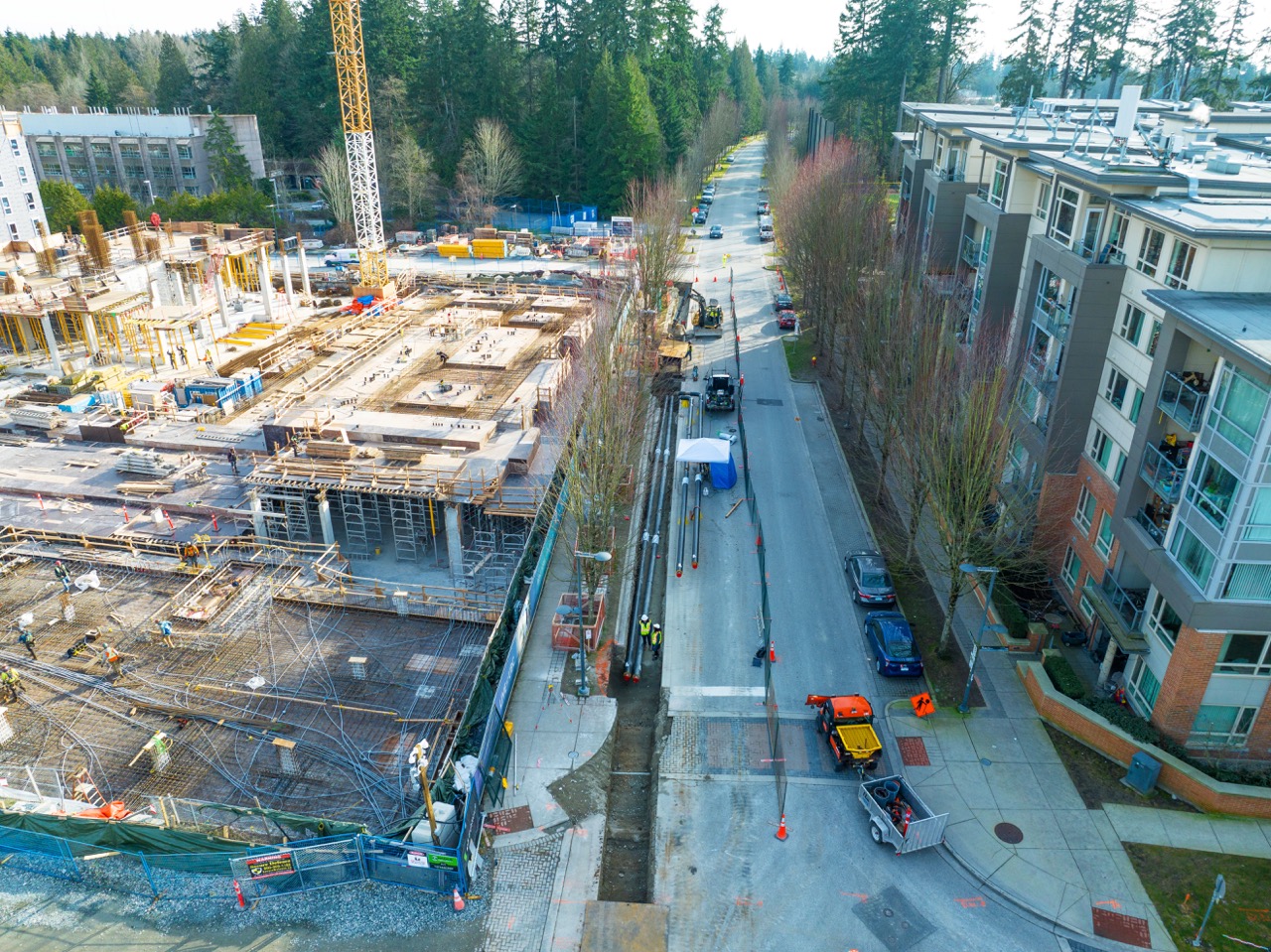The expansion of Wesbrook’s Neighbourhood District Energy System, which has affected traffic and parking for residents in the south campus, is expected to be completed by the end of the month.
Vancouver-based Corix Utilities has been upgrading the system, which provides hot water and heat to many of the residential buildings in the area.
Rather than having mechanical equipment in each building, a district energy system has centralized plants that distribute heat and hot water across neighbourhoods. That can reduce carbon emissions and reduce equipment needs and maintenance costs in connected buildings.
The operation in Wesbrook has two centres that heat water and distribute it through an underground piping network to connected buildings, says Charlene Rowan, Corix’s senior manager of communications.
“By sharing energy proficiently across several buildings, the system provides efficient, cost-effective, and environmentally friendly heat and hot water to customers in the Wesbrook neighbourhood” she says.
The system has been in operation since 2015, when it began servicing newly constructed buildings in Wesbrook Place. There are two plants—one next to Pacific Spirit Regional Park just south of Binning Road and Gray Avenue, the other along the South Campus Greenway, just steps from the entrance of UBC Farm.

Both plants use natural gas to heat water before it is distributed through the network. Plans include extending the system to all future residences in the area.
There are now 21 buildings connected to through almost 2 kilometres of underground pipe.
“The additional 1 kilometre of pipe currently being installed will interconnect the east and west nodes into one unified thermal energy system. This interconnection further increases the system’s efficiency and provides additional redundancy, ensuring heat and hot water are readily available year-round,” she said.
“Future plans include expansion into neighbouring areas, providing a resilient energy network that advances UBC’s Neighbourhood Climate Action Plan and pathway to net-zero.”
UBC says the system aims to cut community greenhouse gas emissions by offering low-carbon energy for residential areas, playing a role in the university’s neighbourhood efforts to address climate change and reduce greenhouse gasses.
A future transition from natural gas to cleaner sources of energy will further reduce emissions, UBC says. One possible energy source that has been proposed by UBC is using waste heat from TRIUMF—the physics laboratory and particle accelerator located further south along Wesbroook Mall.
POURIA KARIMI ATTENDS UNIVERSITY HILL SECONDARY.
